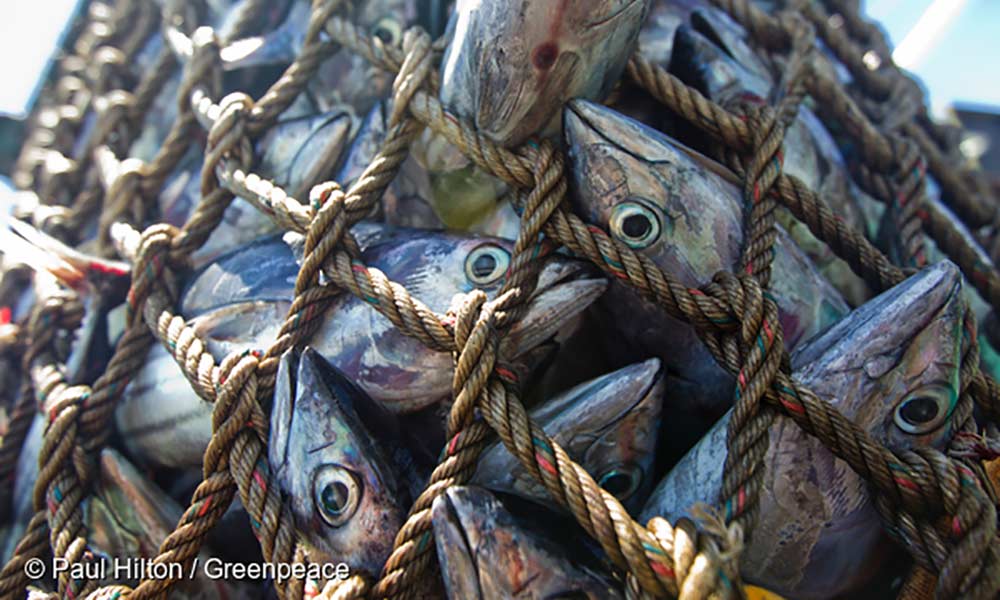For farmed tuna, the amount of feed required is even more concerning. Research suggests that for the Southern Bluefin tuna, confined in “sea cages” off the coast of South Australia, it can take between 10 and 20 kgs of wild-caught fish to produce just 1 kg of tuna. What’s more, commercial tuna farms around the world rely on the capture of young tuna from the wild, which are then ‘fattened up’ in pens. Southern Bluefin Tuna have been classified as ‘critically endangered’, with populations down to an estimated 5% of their original numbers. Yet fishing continues.
Fish in farms live an unnatural life
The ecological impacts are not the only reason we should be concerned about fish farms. Just like animals in factory farms on land, fish in fish farms live a cramped and stressful life. Research on salmon in farms found that 1 in 4 experience brain chemistry and behaviour identical to that of severely depressed people, and can be seen floating lifelessly at the surface.
On top of the psychological stress, the crowded environments are also a risk to the physical health of these fish, too. Disease is common and can spread rapidly in the overcrowded conditions. Instead of giving fish more space, many farms instead feed them antibiotics, which the World Health Organisation has warned is contributing to the threat of antibiotic resistance in humans (ie. ‘superbugs’).
Tassal recently made headlines trying to prevent the release of a report on its antibiotic use. Despite calls to shift away from antibiotics and instead use vaccination, the report revealed that in January 2022 alone, Tassal used 600kgs of antibiotics at just one marine farm site. Concerningly, wild fish caught near these fish farms have been found with ‘elevated antibiotic levels’.
What are the issues with wild-caught fish?
There are several animal welfare concerns and environmental issues with the wild-caught fishing industry too. Firstly, sea animals have the ability to feel pain and each individual suffers greatly when dragged from their ocean home – they can be crushed to death with the weight of their fellow animals in the net, or suffocate slowly once they are out of the water.
With the use of indiscriminate fishing trawlers and enormous nets, it’s not just these ‘targeted’ fish who are suffering. All kinds of marine life, including seals, sharks, rays and dolphins, are caught in fishing nets. If they survive being pulled onto the ship, they may be thrown back into the sea, injured or dying.
Globally, industrialised fishing is impacting wild fish populations, destroying food sources for marine predators and damaging the intricate ecosystems that we still know so little about.










